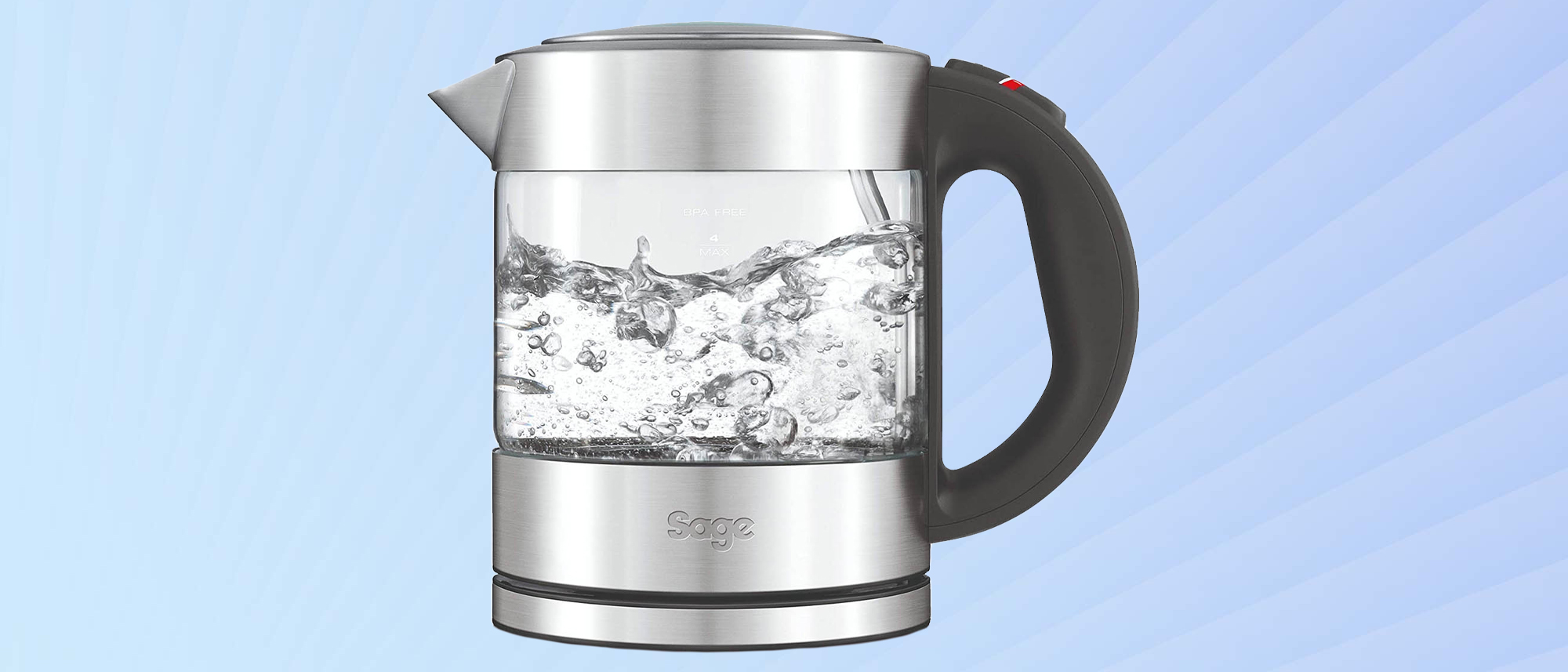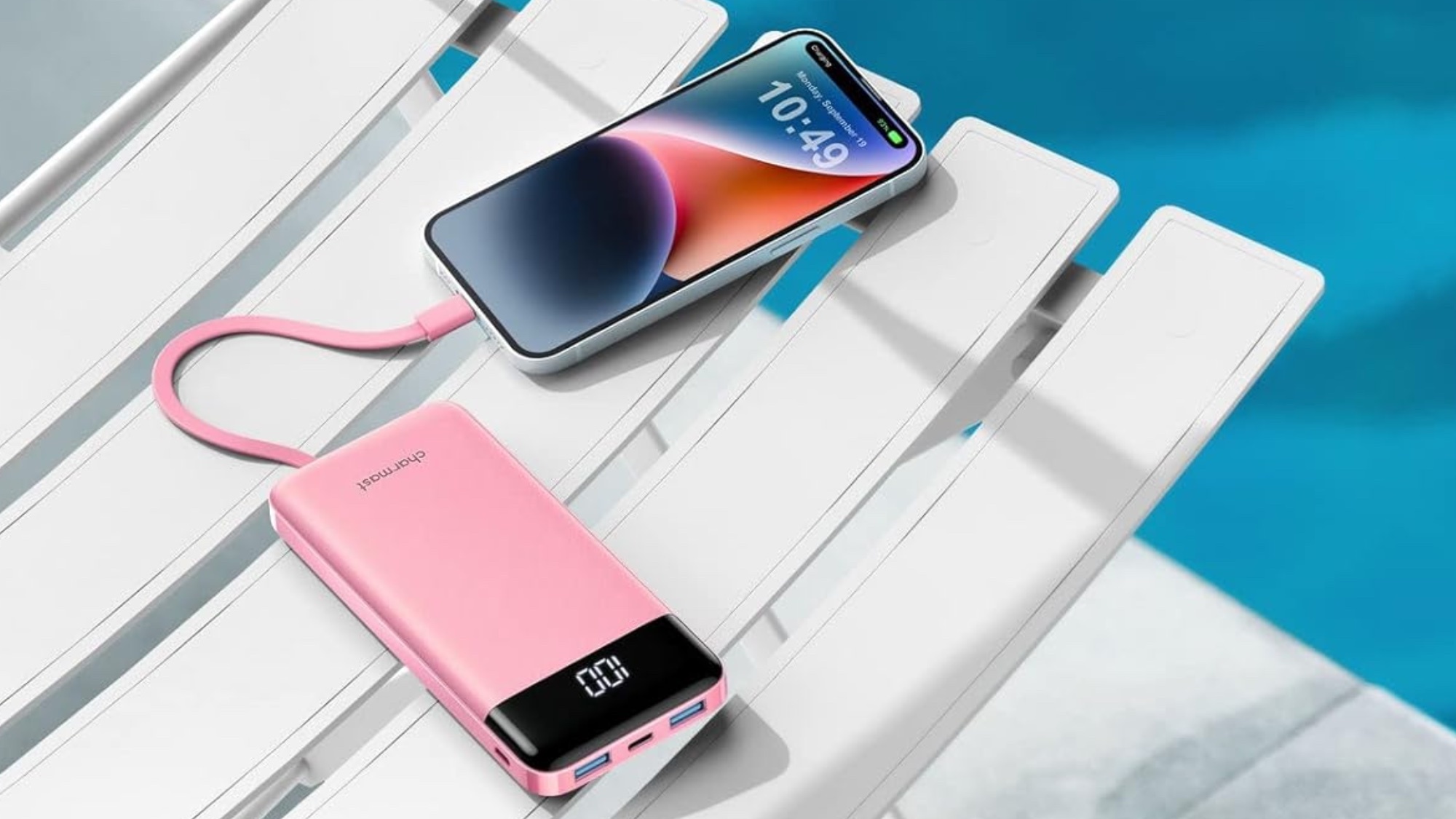Tom's Guide Verdict
The Sage Compact Kettle is the best kettle if you’re tight for space, but want a premium design.
Pros
- +
Compact shape
- +
Soft open lid
- +
Very long cord length
Cons
- -
You can see limescale inside quickly
- -
Slow to boil
- -
Hot external temperature
Why you can trust Tom's Guide
Minimum capacity: 250ml
Maximum capacity: 1 litre
Water gauge: Yes
Lid type: Flip top
Exterior material: Glass and stainless steel
Wattage: 2400
Cord length: 94cm
Weight: 964g
Size: 19 x 20 x 15 cm
Variable temperature: No
The Sage Compact Kettle has a pretty, petite design which will modernize any kitchen countertop. It features a glass wall exterior, which means you can see the water as it boils, and it holds up to one litre, or four cups. The stainless steel accents and soft-open lid give it a premium finish.
Compared to the other kettles on test, it wasn’t particularly fast to boil and nor was it safe to touch the exterior, which knocks it down our list of the best kettles. However, the design is practical and easy to use. Not to mention, it’s very easy on the eye, as you will see in our Sage Compact Kettle review.
Sage Compact Kettle review: Price and availability
The Sage Compact Kettle is available to buy from Amazon for £59 and directly from Sage for £59.95. It’s not available to buy in the U.S.
Sage Compact Kettle review: Design
The Sage Compact Kettle features a short and sweet design, measuring 19 x 20 x 15 cm. Because of its size, it’s got a smaller capacity than most kettles, with a minimum capacity of 250ml and a maximum of one litre. This means it can hold between one and four cups at a time. There’s a water gauge printed on each side of this glass kettle — one in millilitres and one in cups. The lid is a flip-top with a slow open mechanism which gives it a premium feel. The body is mostly made from glass with stainless steel making up the lid and base and it comes with a plastic handle. The handle is smooth, but it's got hard edges which can dig into the hand on its sides.
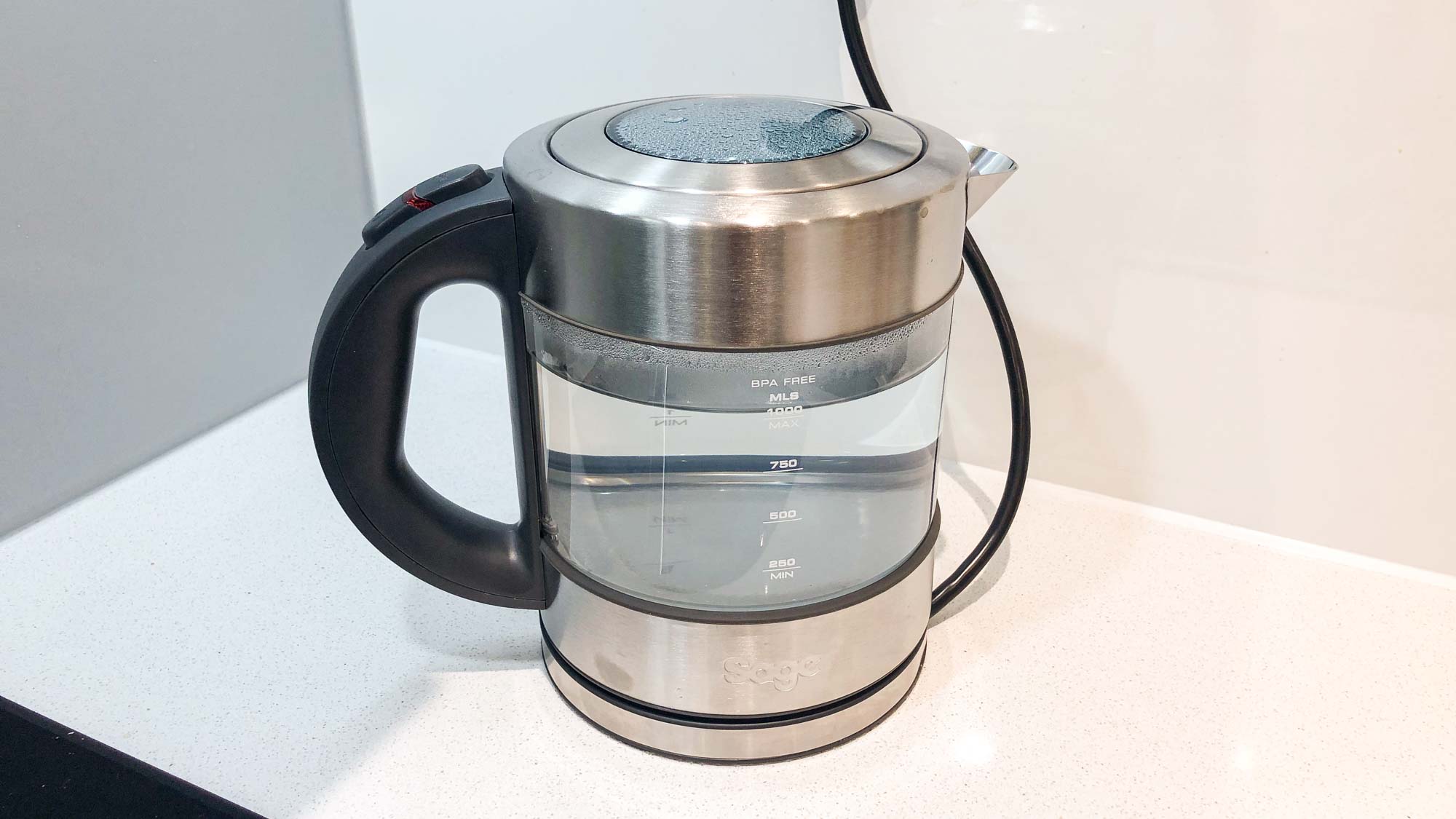
It’s quite a heavy kettle considering its smaller size, weighing 964g when empty and 1960g when full. Our winning kettle, the Bosch Sky Kettle, weighed 1037g when empty by comparison, and that holds up to 1.7 litres. When switched on, this single temperature kettle makes no audible noise, but a small light illuminates on the handle — this could be more obvious. The base is plastic with stainless steel wrapped around its edge, so it feels fairly premium. It comes with the longest cord length we’ve seen at 94cm, which would make it ideal as a travel kettle where plug points are few and far between. There’s cord storage hidden in the base to hide the excess.
Sage Compact Kettle review: Performance
When boiling a single litre of water, we found that the Sage Compact Kettle was slow to reach temperature, needing two minutes and 39 seconds on average. The Bosch Sky Kettle only needed two minutes and four seconds to boil the same amount by comparison. The body also grew exceedingly hot in the process, reaching 83.5°C on the glass and 84.7°C on the stainless steel — in both cases, this is a scalding hazard, however it’s worth noting that the handle stayed at room temperature.
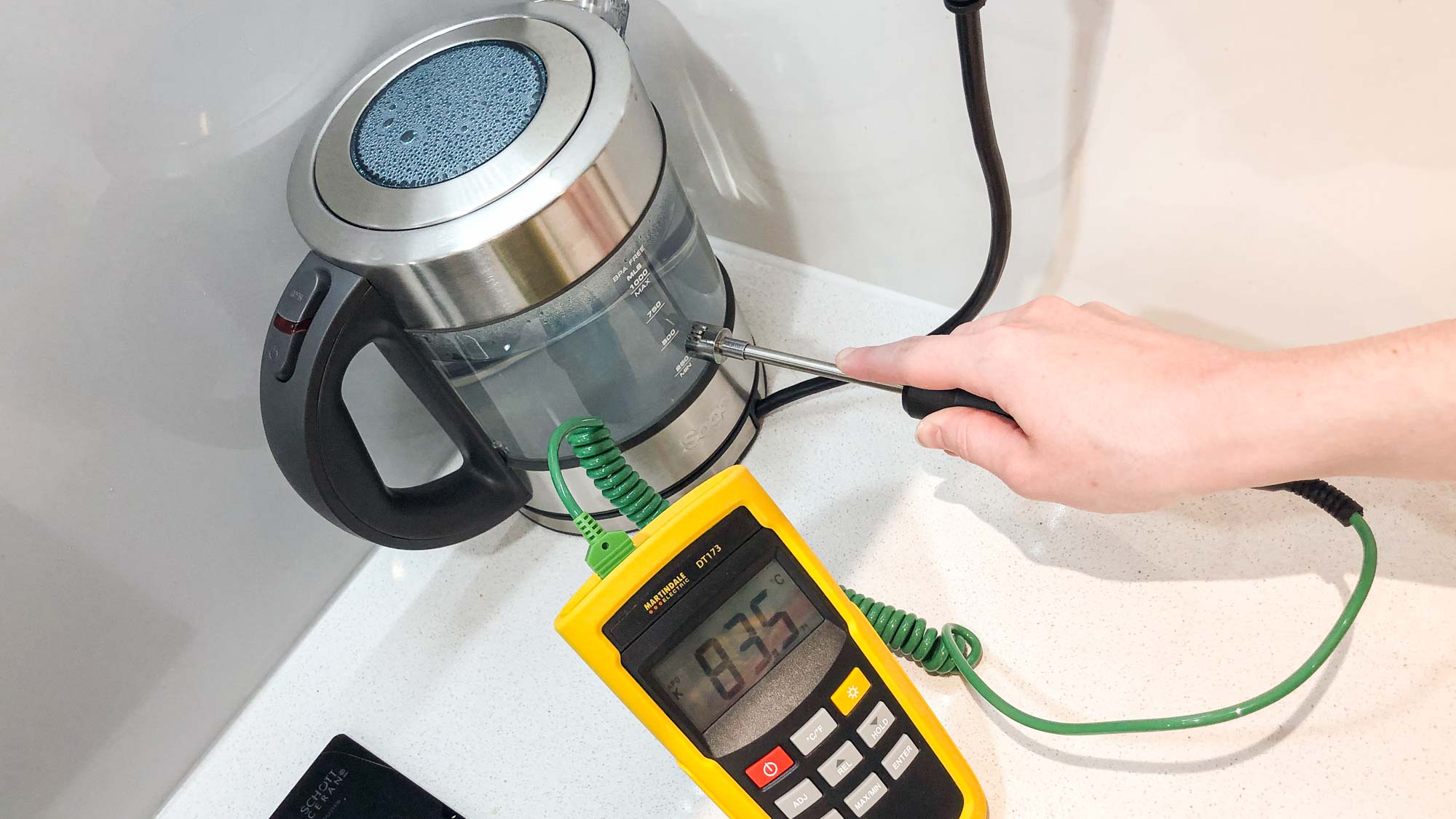
It was average in terms of noise while boiling, clocking 74.5 dB at its height. Energy use too was standard, at 0.113 kWh to boil one litre; the Bosch Sky Kettle only needed 0.106 kWh.
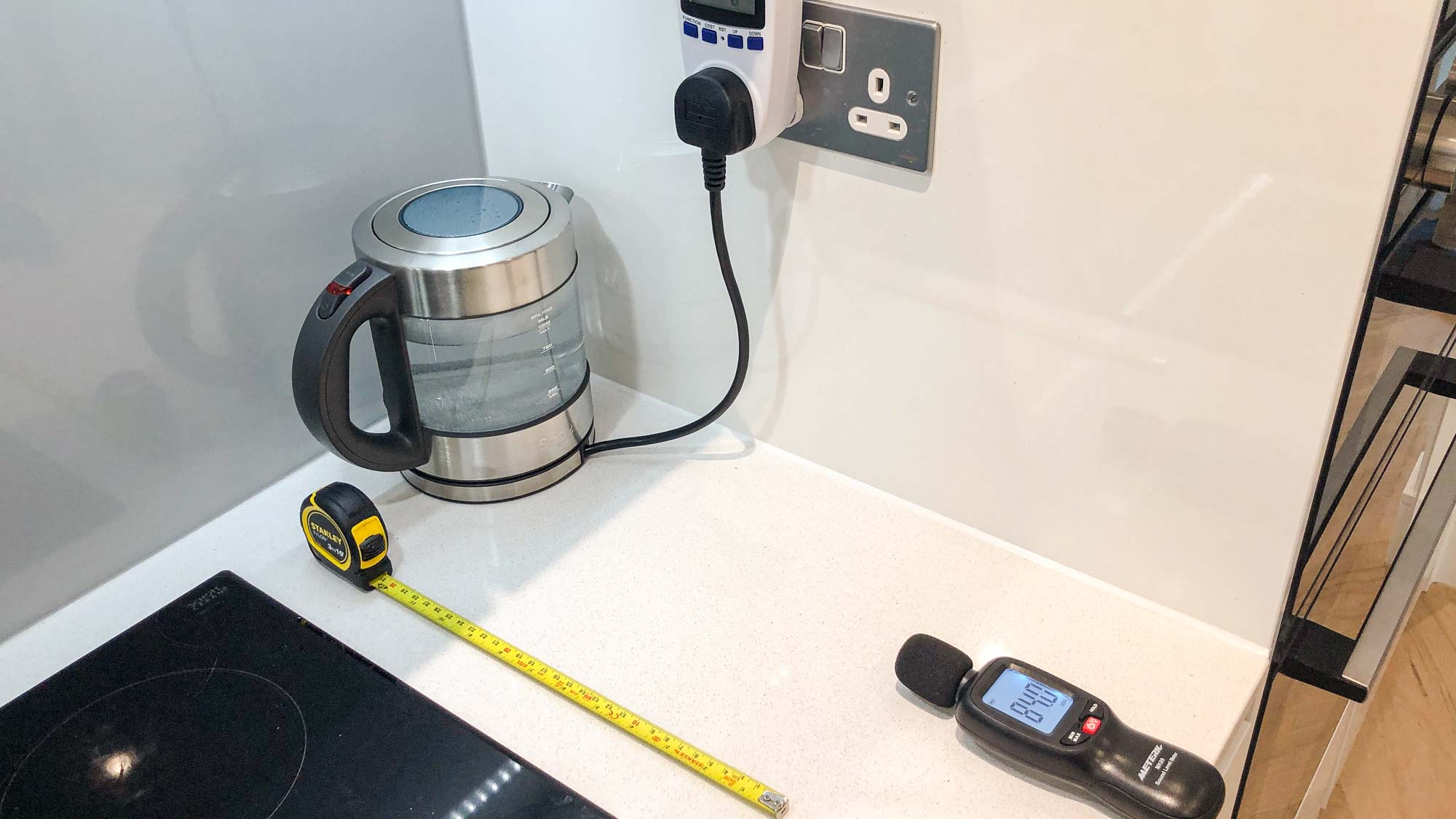
It didn’t leak or spit while boiling at its full capacity and it was quite impressive to watch the water boil through the glass walls. These glass walls were more for show above all though; when we assessed the insulation an hour after boiling, the water measured just 62.9°C. This was the coolest temperature of all of the kettles we tested, so don’t expect the water to stay hot for long. It’s easy to control the water flow as you pour and it doesn’t dribble back down itself if you recede slowly.
Sage Compact Kettle review: Ease of use and manual
This kettle is unusual in that the limescale filter is built-into the lid’s design, so it can’t be removed. This does make it difficult to clean, plus the holes are so large compared to traditional mesh filters, that smaller limescale flakes are bound to get past. The flip-top lid is easy to open and close via a switch at the top of the handle. When it comes to filling this kettle up, you can only do so through the spout slowly — otherwise it splashes out. If you’re impatient, you can easily fill it through the lid. The water level also couldn’t be easier to see as you fill it thanks to the glass body. It’s easy to switch this kettle on via the power switch at the top of the handle. However, as it’s made of glass, be prepared to clean this kettle’s interior regularly — it quickly looks dirty as you can see straight through to the inside.
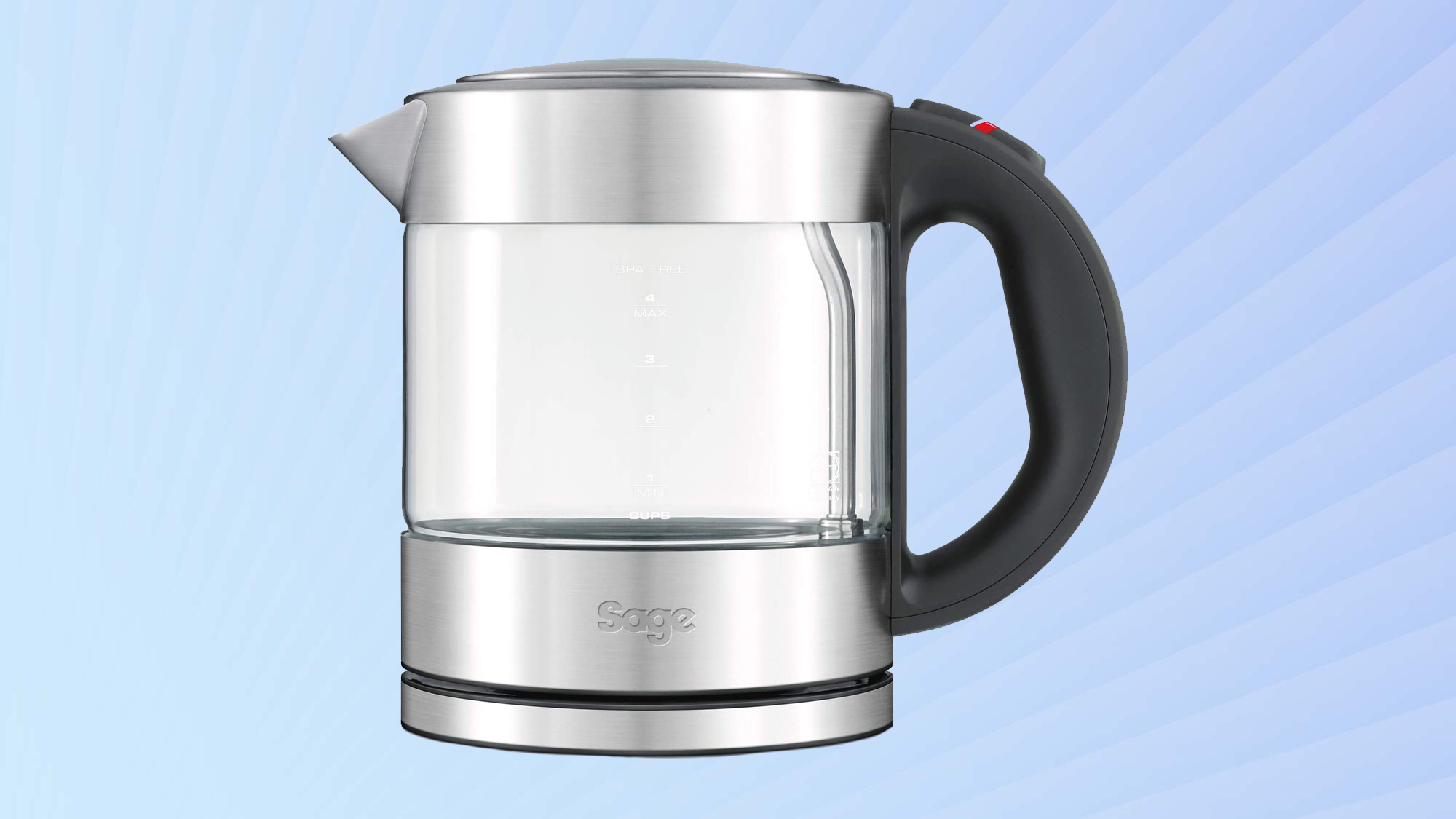
The manual scored well for its clarity. It comes with a single diagram as well as adequate safety advice and tips on cleaning and descaling. (You can also refer to our guide on how to descale a kettle.) Step-by-step instructions are brief, but they’re listed, and there are contact details on the back for the manufacturer, although there’s no troubleshooting.
Sage Compact Kettle review: Verdict
Ultimately, the Sage Compact Kettle has room for improvement in both its performance and design. Compared to our winning kettle, the Bosch Sky Kettle, it’s slower to boil, hotter to touch and uses up more energy, although the Sage Compact Kettle is quieter at 74.5 dB vs 79.4 dB. The Sage is naturally much smaller too, and will take up less kitchen countertop space. All in all, it’s a neat design which will look impressive on display, but its performance is nothing to write home about. Plus, you need to be prepared to clean it more often than a regular non-glass kettle. If you’re in the market for a smaller kettle and you care about appearances, it’s worth your consideration.

Katie Mortram used to be a Homes Editor for Tom's Guide, where she oversaw everything from kitchen appliances to gardening tools, as well as smart home tech. Specializing in providing expert advice for cleaning and home manintenance, she now works as Household Advice Editor for Good Housekeeping.
